Η οικονομία του οπίου στο Αφγανιστάν είναι μια επιχείρηση πολλών δισεκατομμυρίων δολαρίων, η οποία έχει άμεσο αντίκτυπο στην αύξηση του εθισμού στην ηρωίνη στις ΗΠΑ.
Παρά την απόσυρση των αμερικανικών στρατευμάτων από τον πρόεδρο Trump, το αφγανικό εμπόριο οπίου συνεχίζει να ανθίζει. Προστατεύεται από τις δυνάμεις κατοχής των ΗΠΑ-ΝΑΤΟ εξ ονόματος ενός συνδέσμου ισχυρών οικονομικών και εγκληματικών συμφερόντων.
Το 2004, τα έσοδα από το εμπόριο ηρωίνης στο Αφγανιστάν έδωσαν εκτιμώμενα παγκόσμια έσοδα της τάξεως των 90 δισεκατομμυρίων δολαρίων. Η εκτίμηση αυτή βασίστηκε στις πωλήσεις λιανικής που αντιστοιχούσαν σε συνολική προσφορά 340.000 κιλών καθαρής ηρωίνης (που αντιστοιχεί σε 3400 τόνους παραγωγής οπίου στο Αφγανιστάν) (Βλέπε Michel Chossudovsky, Πόλεμος της Αμερικής κατά της τρομοκρατίας, κεφάλαιο XVI, Global Research, Μόντρεαλ 2005)
Σήμερα, μια χονδρική εκτίμηση που βασίζεται στις τιμές λιανικής των ΗΠΑ υποδηλώνει ότι η παγκόσμια αγορά ηρωίνης είναι πάνω από το όριο των 500 δισεκατομμυρίων δολαρίων. Αυτή η αύξηση των πολλών δισεκατομμυρίων δολαρίων είναι αποτέλεσμα της σημαντικής αύξησης του όγκου της συναλλαγής ηρωίνης παγκοσμίως σε συνδυασμό με τη μέτρια αύξηση των τιμών λιανικής.
Με βάση τα πιο πρόσφατα δεδομένα (UNODC) (2017), η παραγωγή οπίου στο Αφγανιστάν είναι της τάξεως των 9000 μετρικών τόνων, η οποία μετά την επεξεργασία και μετασχηματισμό ισοδυναμεί με περίπου 900.000 kg. της καθαρής ηρωίνης.
Με την αύξηση του εθισμού στην ηρωίνη από το 2001, η λιανική τιμή της ηρωίνης αυξήθηκε. Σύμφωνα με πληροφορίες της DEA, ένα γραμμάριο καθαρής ηρωίνης πωλούσε το Δεκέμβριο του 2016 στην εγχώρια αγορά των ΗΠΑ για $ 902 ανά γραμμάριο.
Το εμπόριο Ηρωίνης είναι κολοσσιαίο: ένα γραμμάριο καθαρής ηρωίνης που πωλεί σε $ 902 ισοδυναμεί με σχεδόν ένα εκατομμύριο δολάρια το κιλό ($ 902.000) (βλέπε πίνακα παρακάτω)
Ο πόλεμος είναι καλός για την επιχείρηση και το οργανωμένο έγκλημα: το εμπόριο οπίου του πολλών δισεκατομμυρίων δολαρίων στο Αφγανιστάν. Αυξάνοντας τον εθισμό της ηρωίνης στις ΗΠΑ
Ανατρέξτε στο 2000-2001.
Το 2000, η κυβέρνηση των Ταλιμπάν με την υποστήριξη των Ηνωμένων Εθνών εφάρμοσε ένα επιτυχημένο πρόγραμμα εξάλειψης των ναρκωτικών, το οποίο παρουσιάστηκε στη Γενική Συνέλευση των Ηνωμένων Εθνών στις 12 Οκτωβρίου 2001, μόλις μια εβδομάδα μετά την έναρξη της εισβολής ΗΠΑ-ΝΑΤΟ. Η παραγωγή οπίου είχε καταρρεύσει κατά 94%.
Το 2001, η παραγωγή οπίου είχε καταρρεύσει σε 185 τόνους από 3300 τόνους το 2000. (βλ. Παρατηρήσεις εξ ονόματος του Εκτελεστικού Διευθυντή του UNODC στη Γενική Συνέλευση του ΟΗΕ, Οκτώβριος 2001, απόσπασμα κατωτέρω)
Ο πόλεμος είναι καλός για την επιχείρηση και το οργανωμένο έγκλημα: το εμπόριο οπίου του πολλών δισεκατομμυρίων δολαρίων στο Αφγανιστάν. Αυξάνοντας τον εθισμό της ηρωίνης στις ΗΠΑ
Το ΝΑΤΟ που διεξήγαγε τον πόλεμο κατά του Αφγανιστάν χρησίμευσε για την αποκατάσταση του παράνομου εμπορίου ηρωίνης
Το κυβερνητικό πρόγραμμα εξάλειψης των ναρκωτικών καταργήθηκε. Ο πόλεμος του 2001 στο Αφγανιστάν χρησίμευσε για την αποκατάσταση και την τόνωση του εμπορίου ναρκωτικών πολλών δισεκατομμυρίων δολαρίων. Έχει επίσης συμβάλει στην αύξηση του εθισμού στην ηρωίνη στις ΗΠΑ.
Η παραγωγή οπίου είχε μειωθεί κατά περισσότερο από 90 τοις εκατό το 2001 ως αποτέλεσμα του προγράμματος της κυβέρνησης των Ταλιμπάν για την εξάλειψη των ναρκωτικών.
Αμέσως μετά την εισβολή (7 Οκτωβρίου 2001) και την κατοχή του Αφγανιστάν από στρατεύματα των ΗΠΑ-ΝΑΤΟ, η παραγωγή οπίου ανέκτησε τα ιστορικά της επίπεδα.
Στην πραγματικότητα, η αύξηση της παραγωγής οπίου συνέπεσε με την επίθεση της αμερικανικής στρατιωτικής επιχείρησης και την πτώση του καθεστώτος των Ταλιμπάν. Από τον Οκτώβριο έως τον Δεκέμβριο του 2001, οι αγρότες άρχισαν να ανασυντάσσουν παπαρούνα σε εκτεταμένη βάση »(βλ. Michel Chossudovsky, op cit.)
Από το 2001, σύμφωνα με το UNODC, η παραγωγή οπίου αυξήθηκε 50 φορές, φθάνοντας τους 9000 μετρικούς τόνους το 2017. (Βλέπε σχήμα 1 παρακάτω)
Ο πόλεμος είναι καλός για την επιχείρηση και το οργανωμένο έγκλημα: το εμπόριο οπίου του πολλών δισεκατομμυρίων δολαρίων στο Αφγανιστάν. Αυξάνοντας τον εθισμό της ηρωίνης στις ΗΠΑ
Εθισμός Ηρωίνης στις ΗΠΑ
Από το 2001, η χρήση ηρωίνης στις ΗΠΑ έχει αυξηθεί περισσότερο από 20 φορές. Οι εκθέσεις των ΜΜΕ σπάνια αναφέρουν πώς η δραματική αύξηση της παγκόσμιας "προσφοράς ηρωίνης" συνέβαλε στη "ζήτηση" σε επίπεδο λιανικής.
Υπήρξαν 189.000 χρήστες ηρωίνης στις ΗΠΑ το 2001, πριν από την εισβολή ΗΠΑ-ΝΑΤΟ στο Αφγανιστάν. Μέχρι το 2012-13, υπήρχαν 3.8 εκατομμύρια χρήστες ηρωίνης στις ΗΠΑ σύμφωνα με μελέτη της Columbia University Mailman School of Public Health. Συμπληρωματικά στοιχεία για το 2012-2013 (βλ. Κατωτέρω γραφική παράσταση), μπορούμε εύλογα να επιβεβαιώσουμε ότι ο αριθμός των χρηστών ηρωίνης σήμερα (συμπεριλαμβανομένων των εθισμένων και των περιστασιακών χρηστών) υπερβαίνει σαφώς τα τέσσερα εκατομμύρια.
Ο πόλεμος είναι καλός για την επιχείρηση και το οργανωμένο έγκλημα: το εμπόριο οπίου του πολλών δισεκατομμυρίων δολαρίων στο Αφγανιστάν. Αυξάνοντας τον εθισμό της ηρωίνης στις ΗΠΑ
Το 2001, 1.779 Αμερικανοί σκοτώθηκαν ως αποτέλεσμα της υπερβολικής δόσης ηρωίνης. Μέχρι το 2016, ο αριθμός των Αμερικανών που σκοτώθηκαν ως αποτέλεσμα του εθισμού στην ηρωίνη έφτασε τις 15.446. (δείτε το γράφημα παρακάτω)
"Η διοίκησή μου δεσμεύεται να καταπολεμήσει την επιδημία των ναρκωτικών", λέει ο Donald Trump.
Αυτές οι ζωές θα είχαν σωθεί εάν οι ΗΠΑ και οι σύμμαχοί τους του ΝΑΤΟ δεν εισέβαλαν και δεν κατέλαβαν το Αφγανιστάν το 2001.
Το πρώτο πράγμα που έκαναν ήταν να υπονομεύσουν τον άλλον

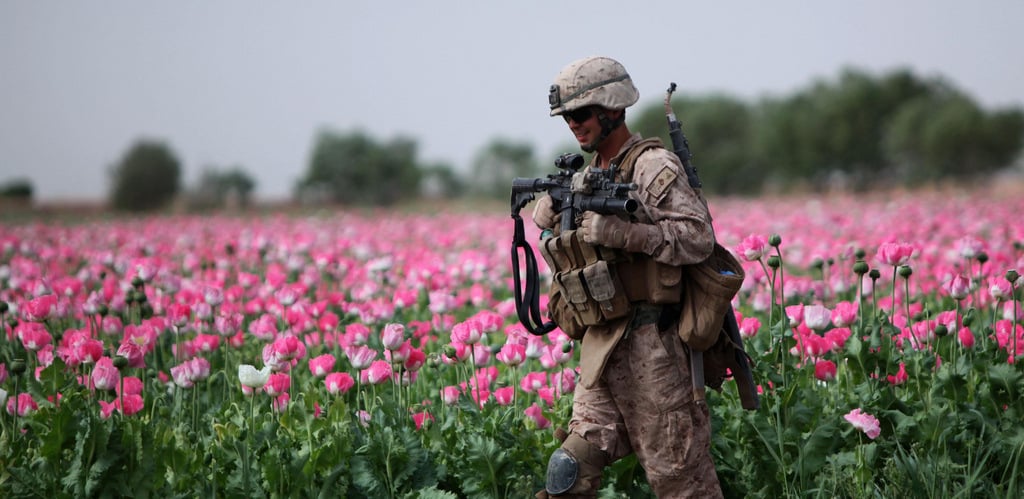

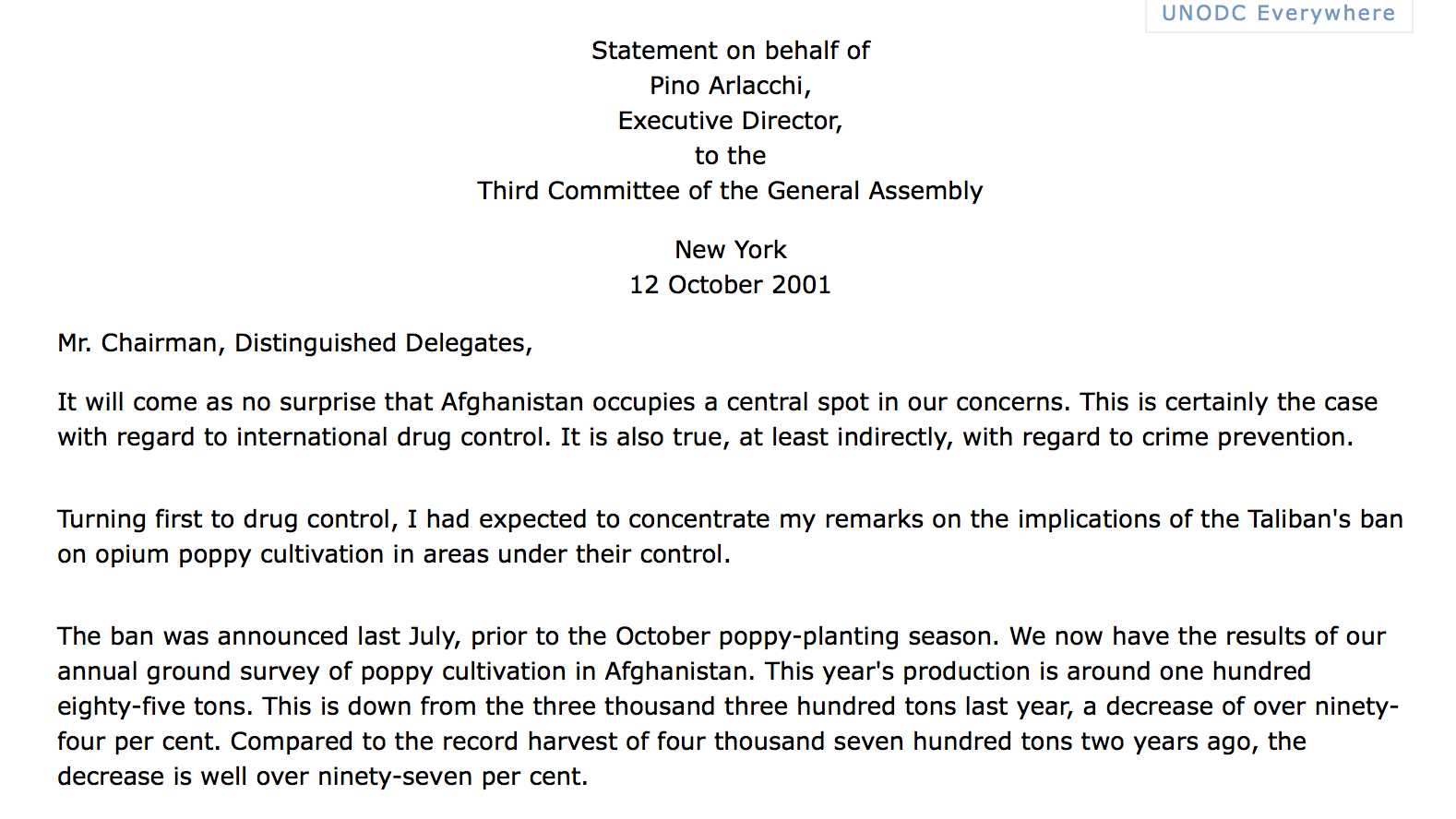
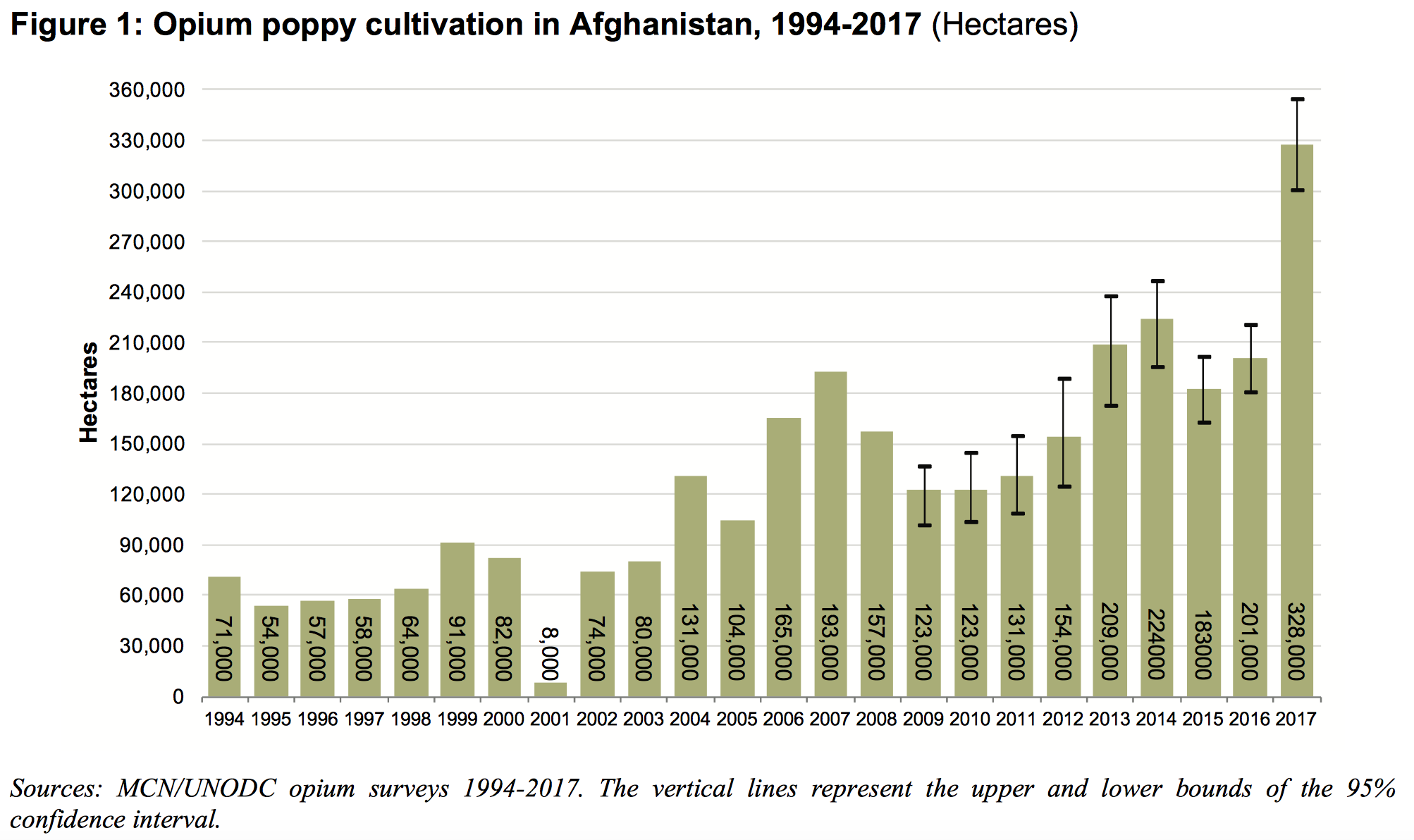
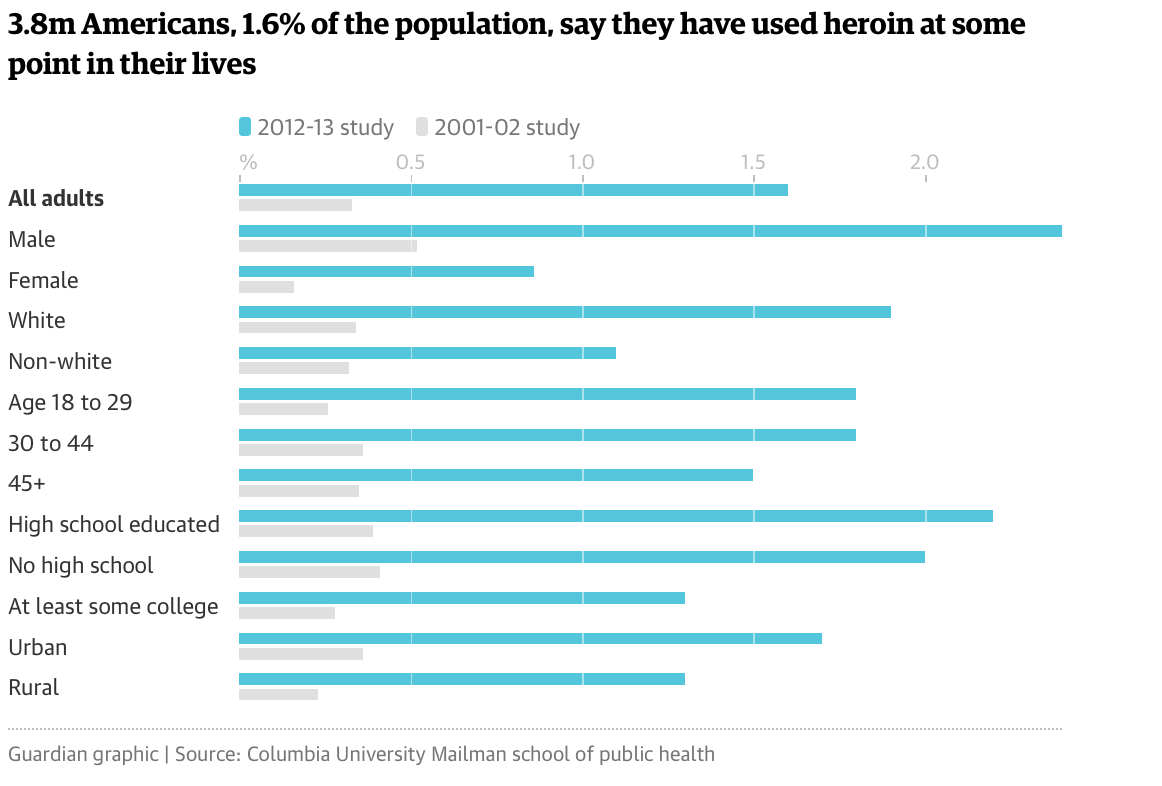
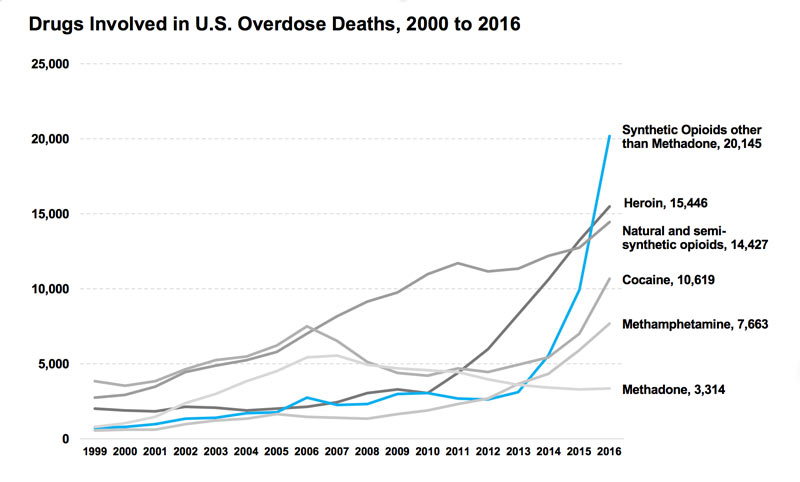
Δεν υπάρχουν σχόλια:
Δημοσίευση σχολίου